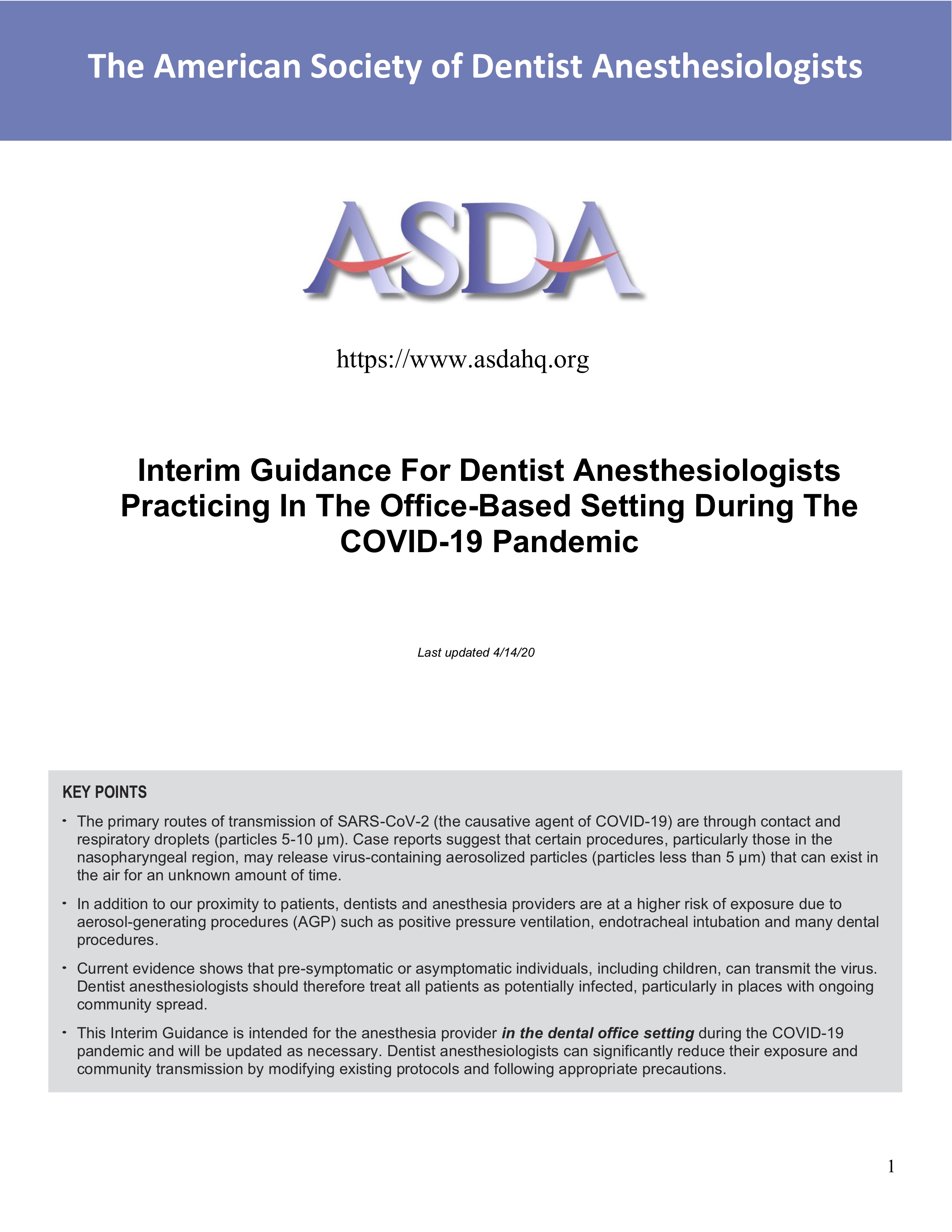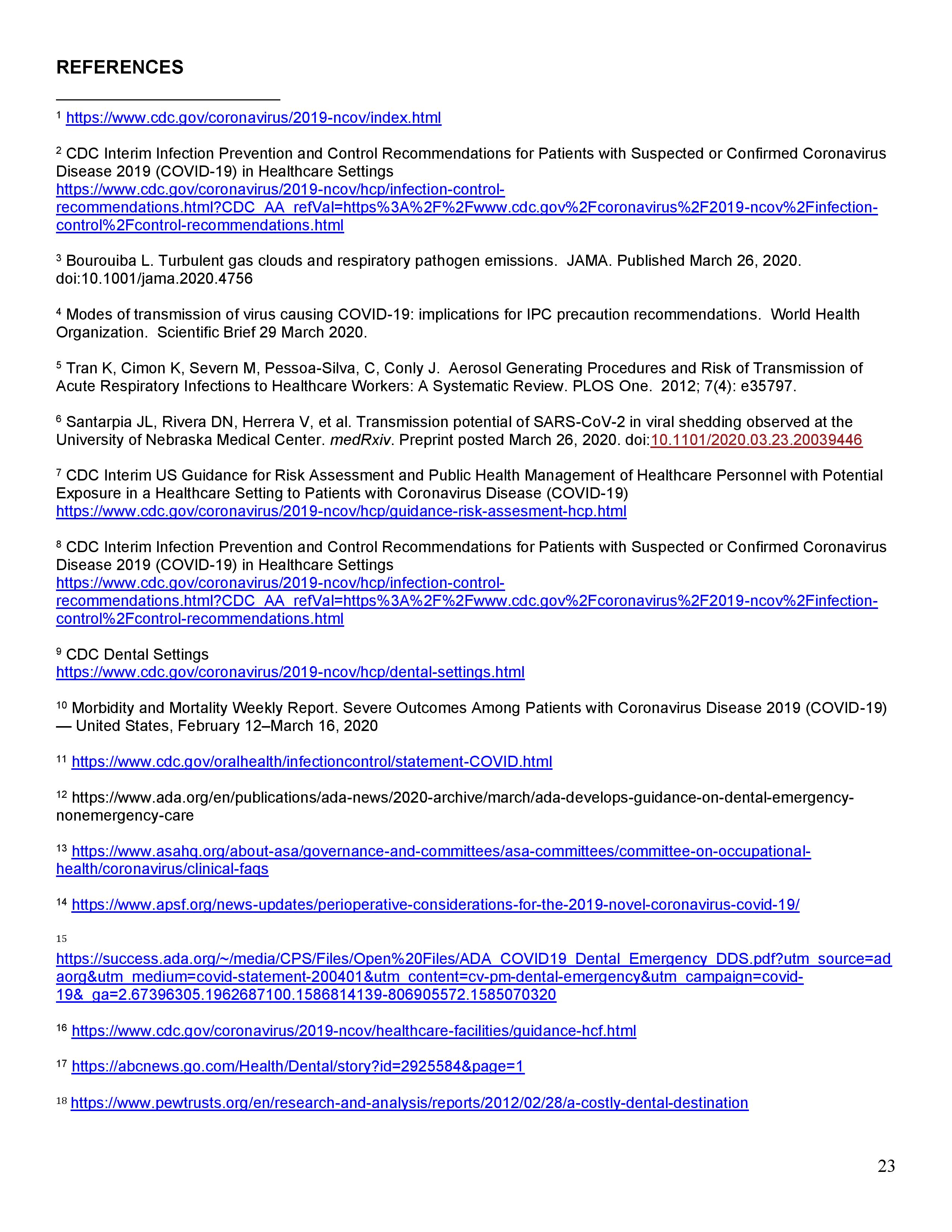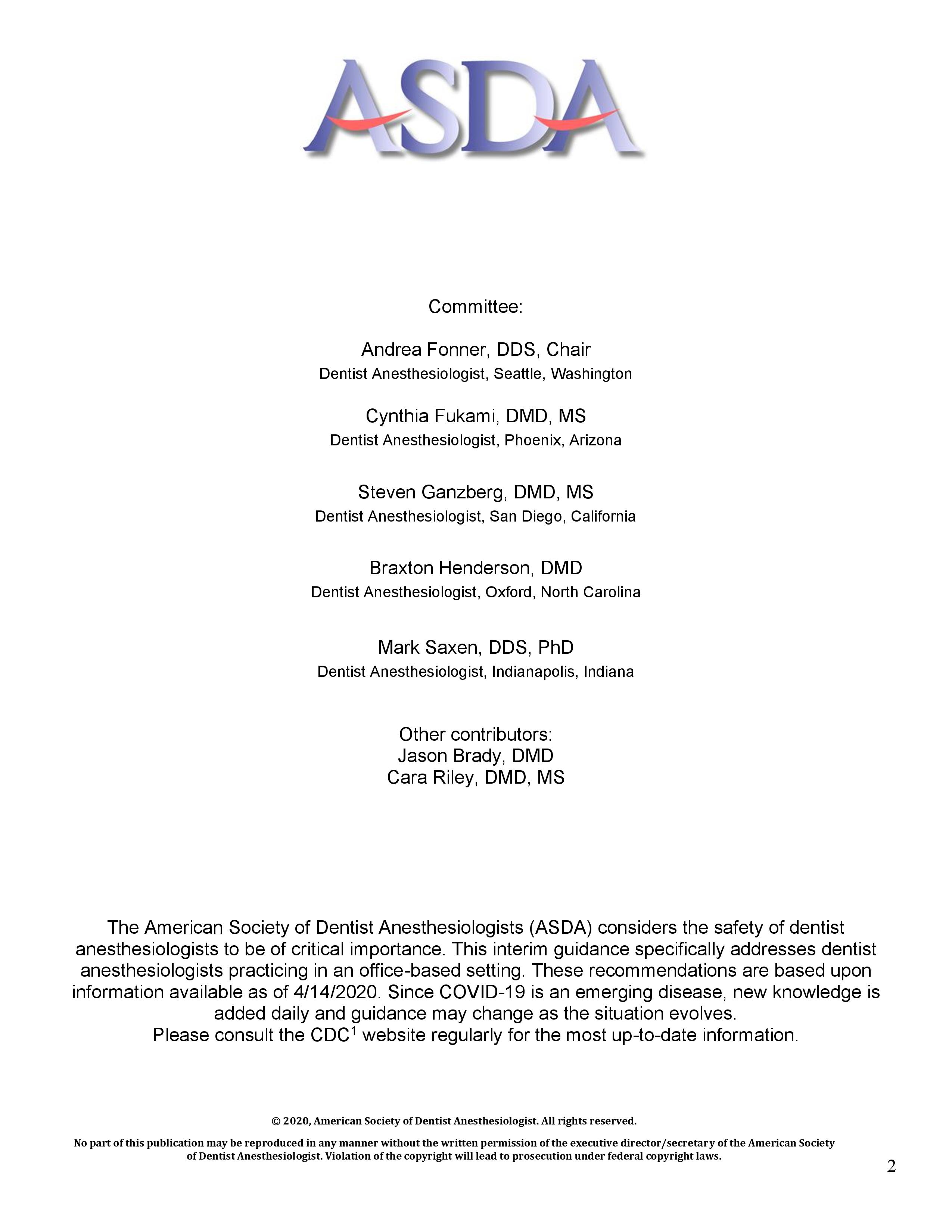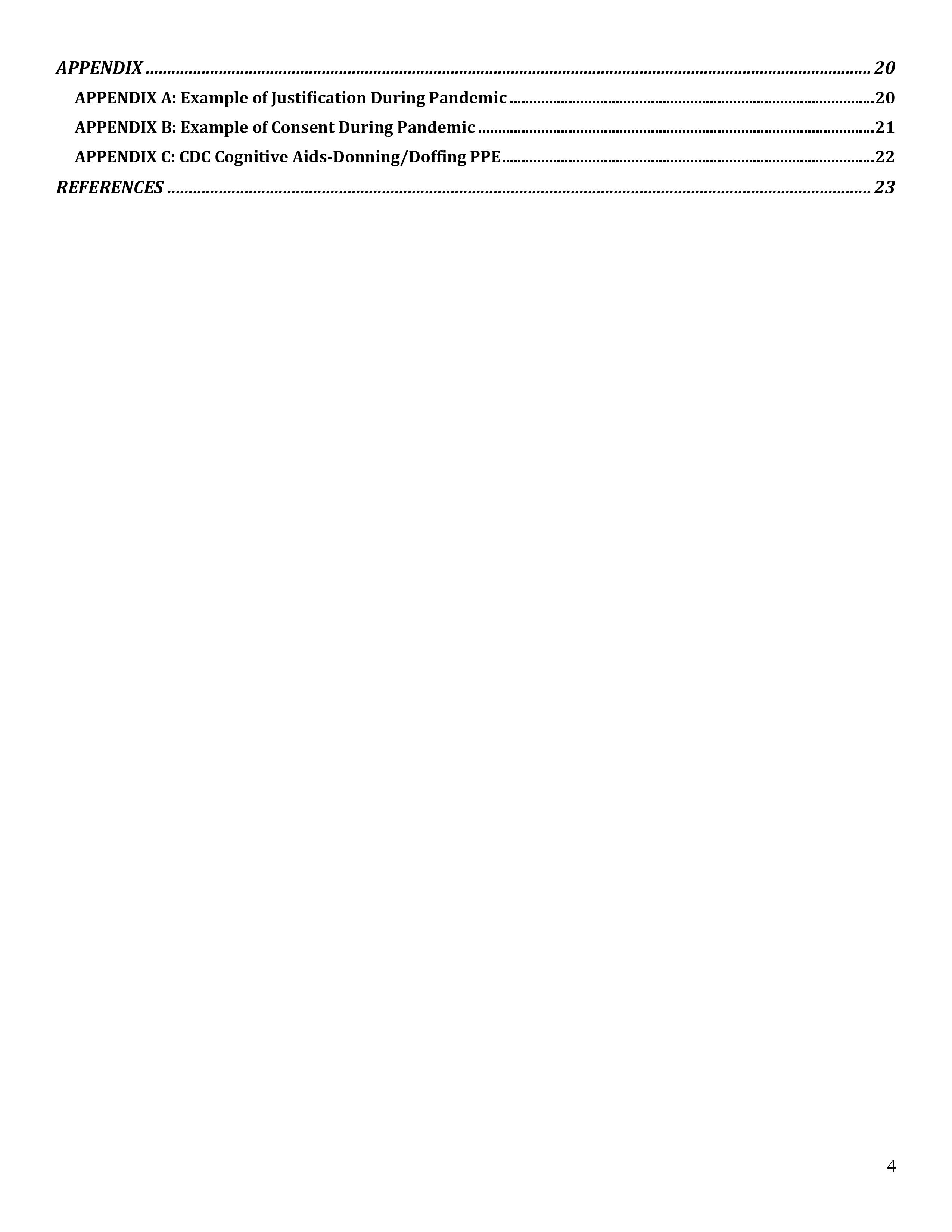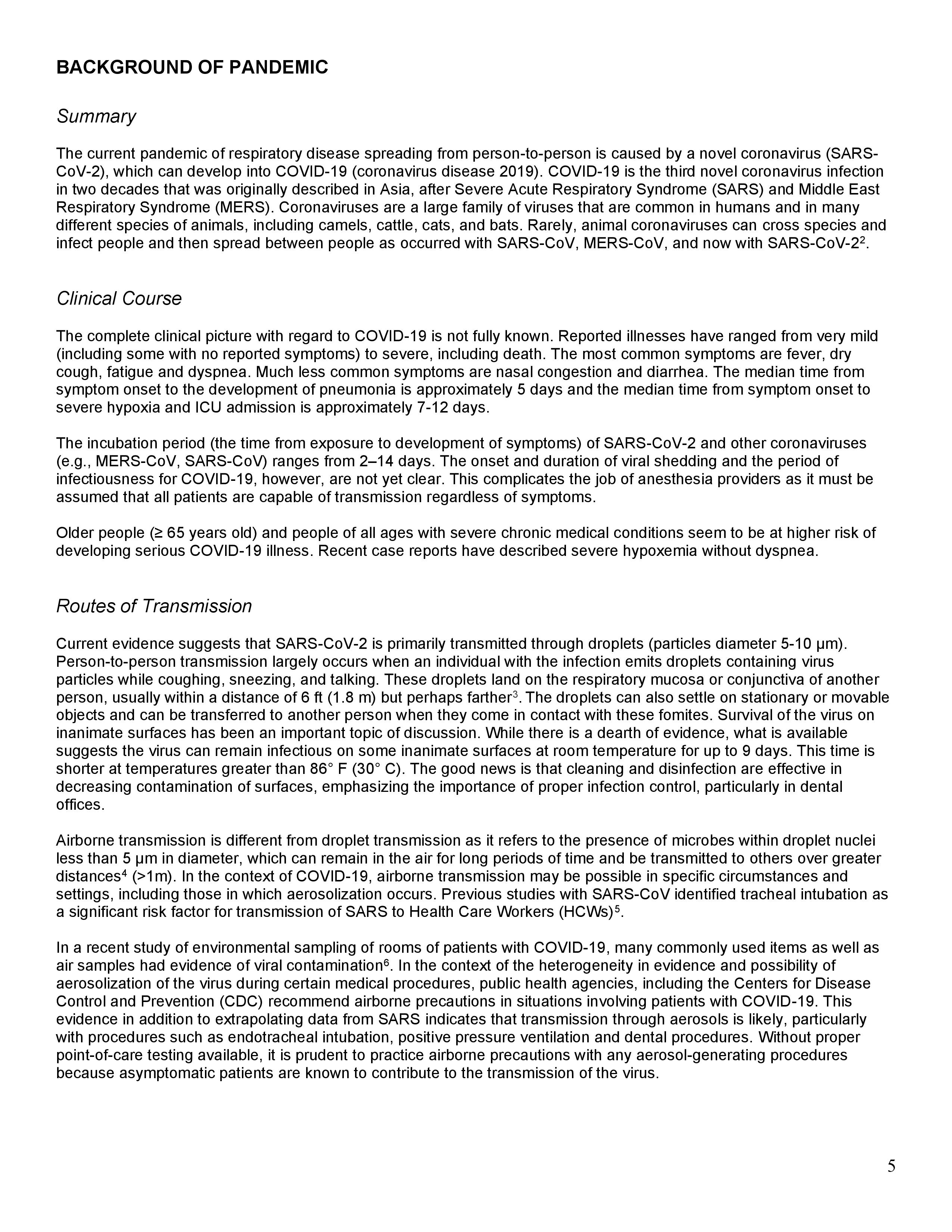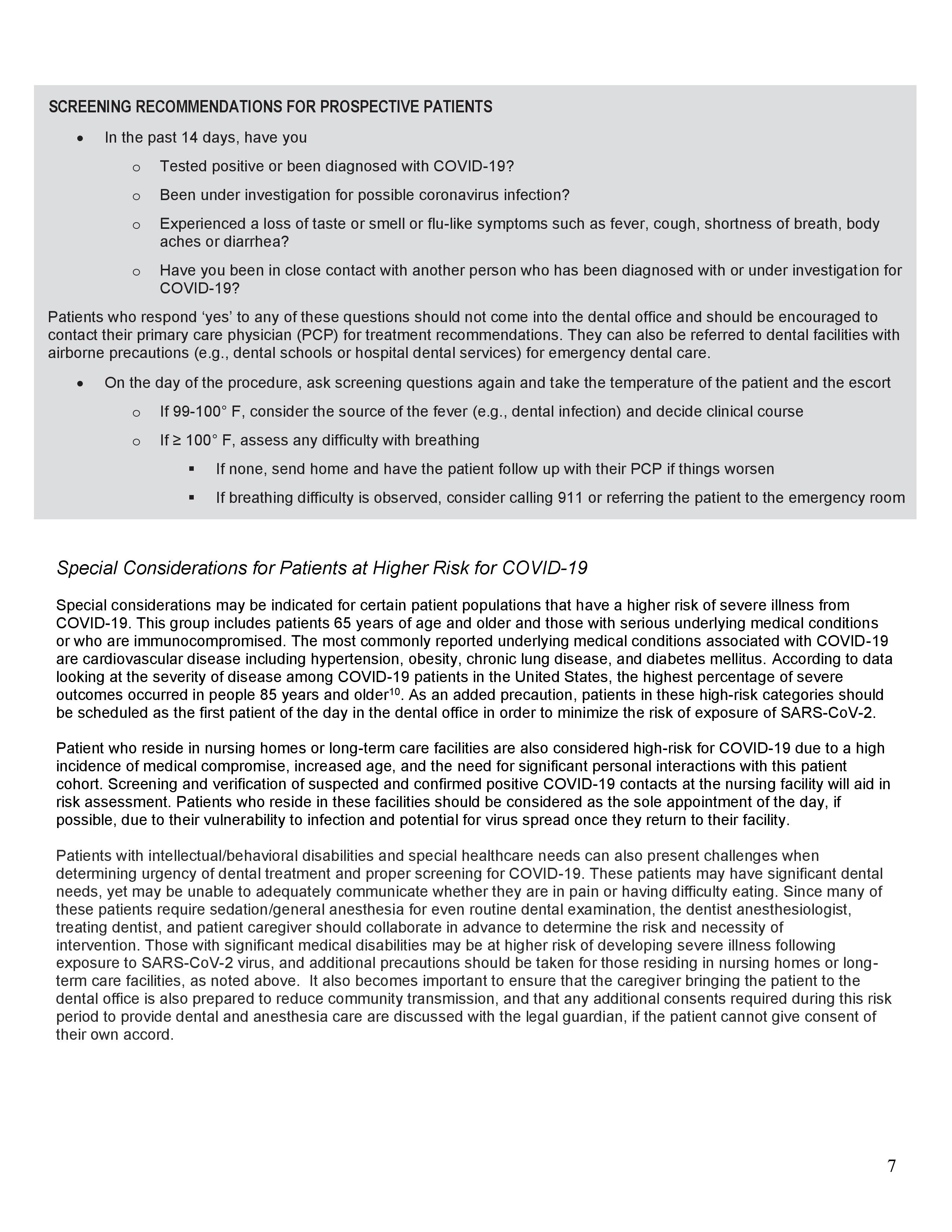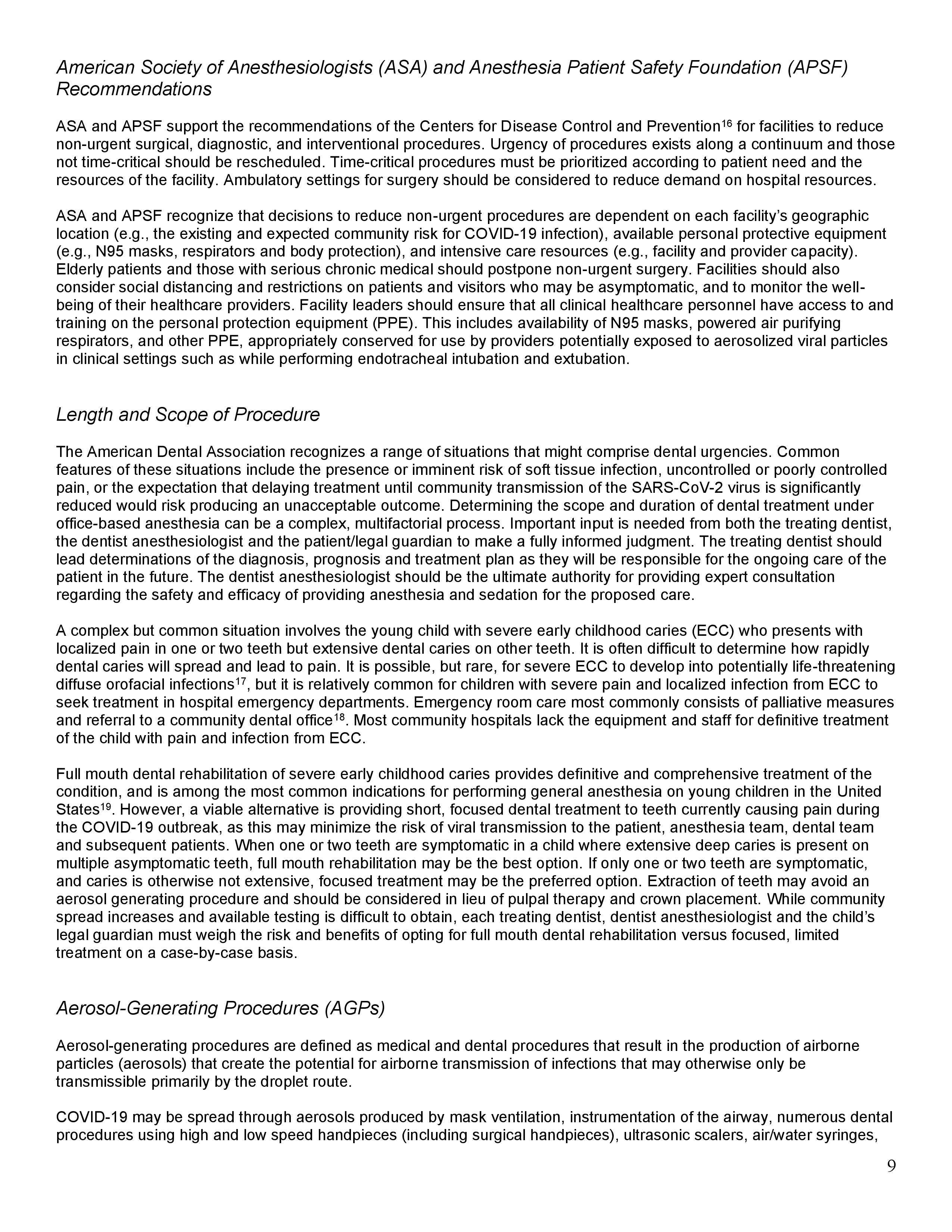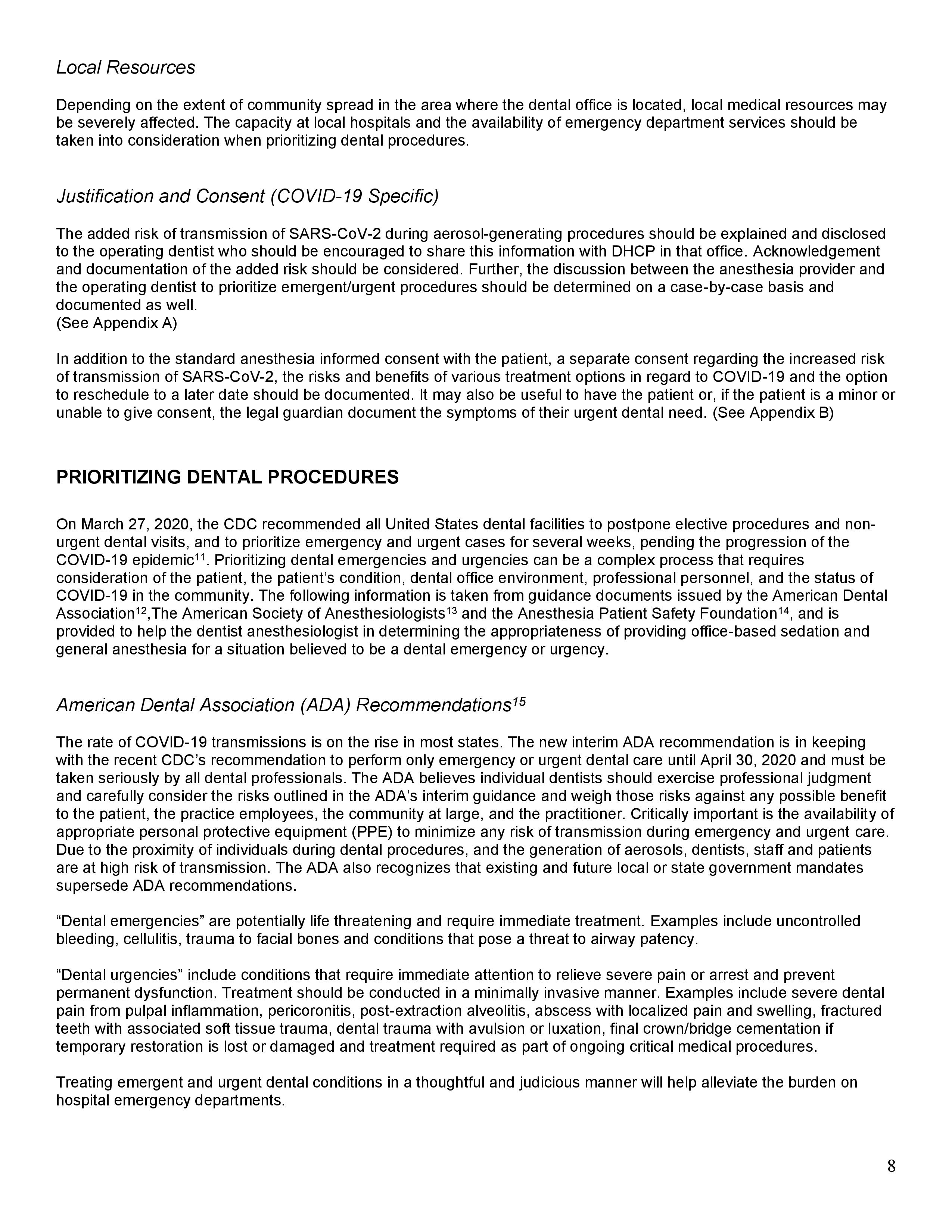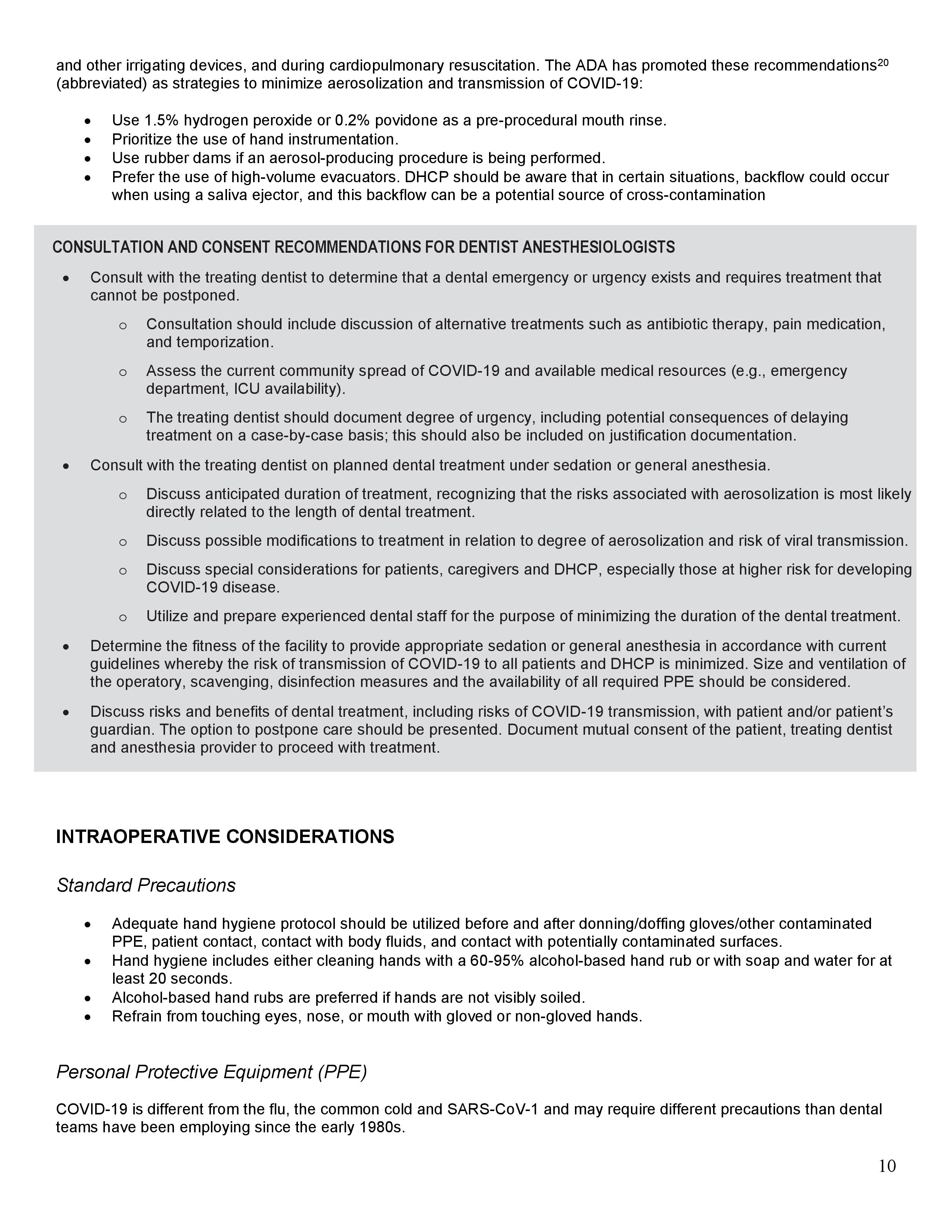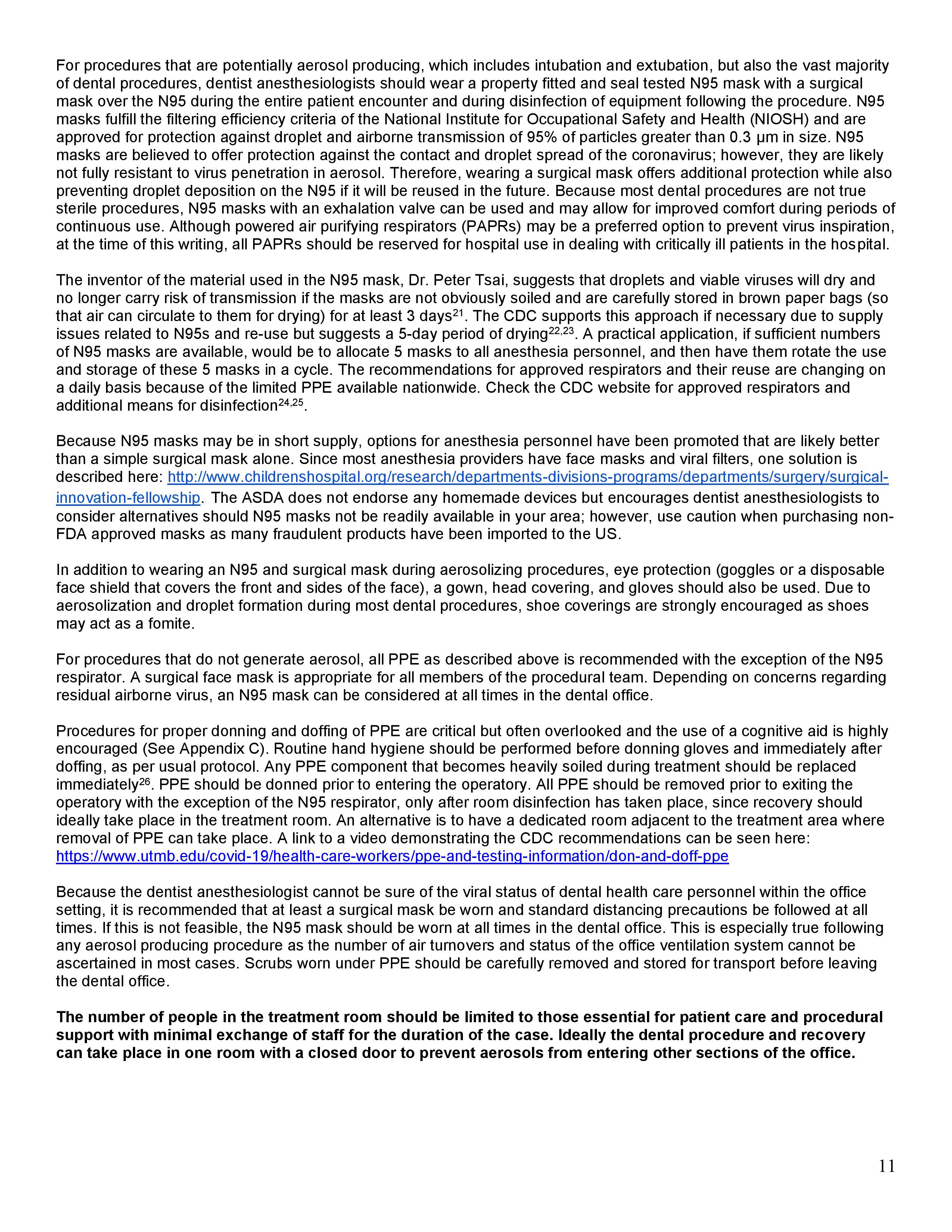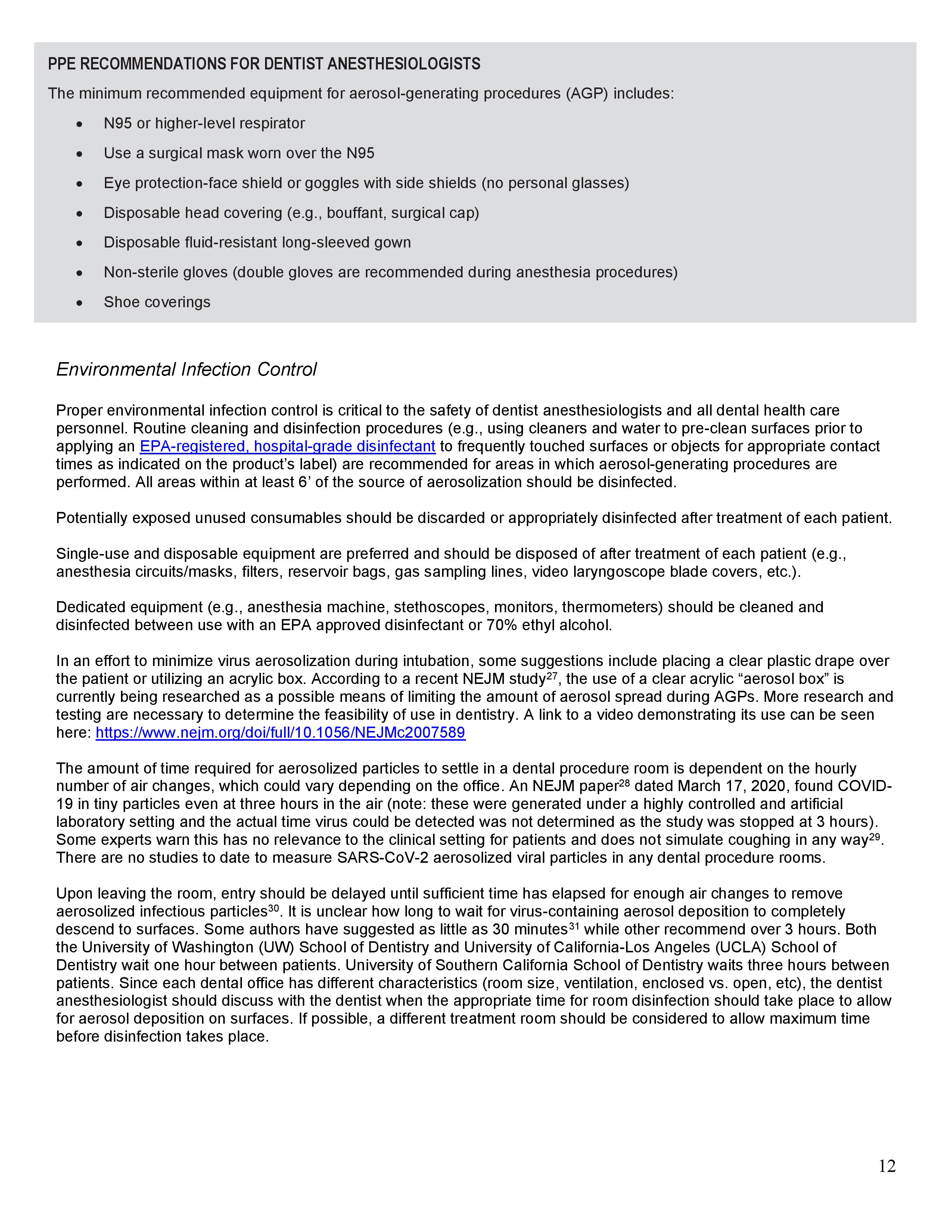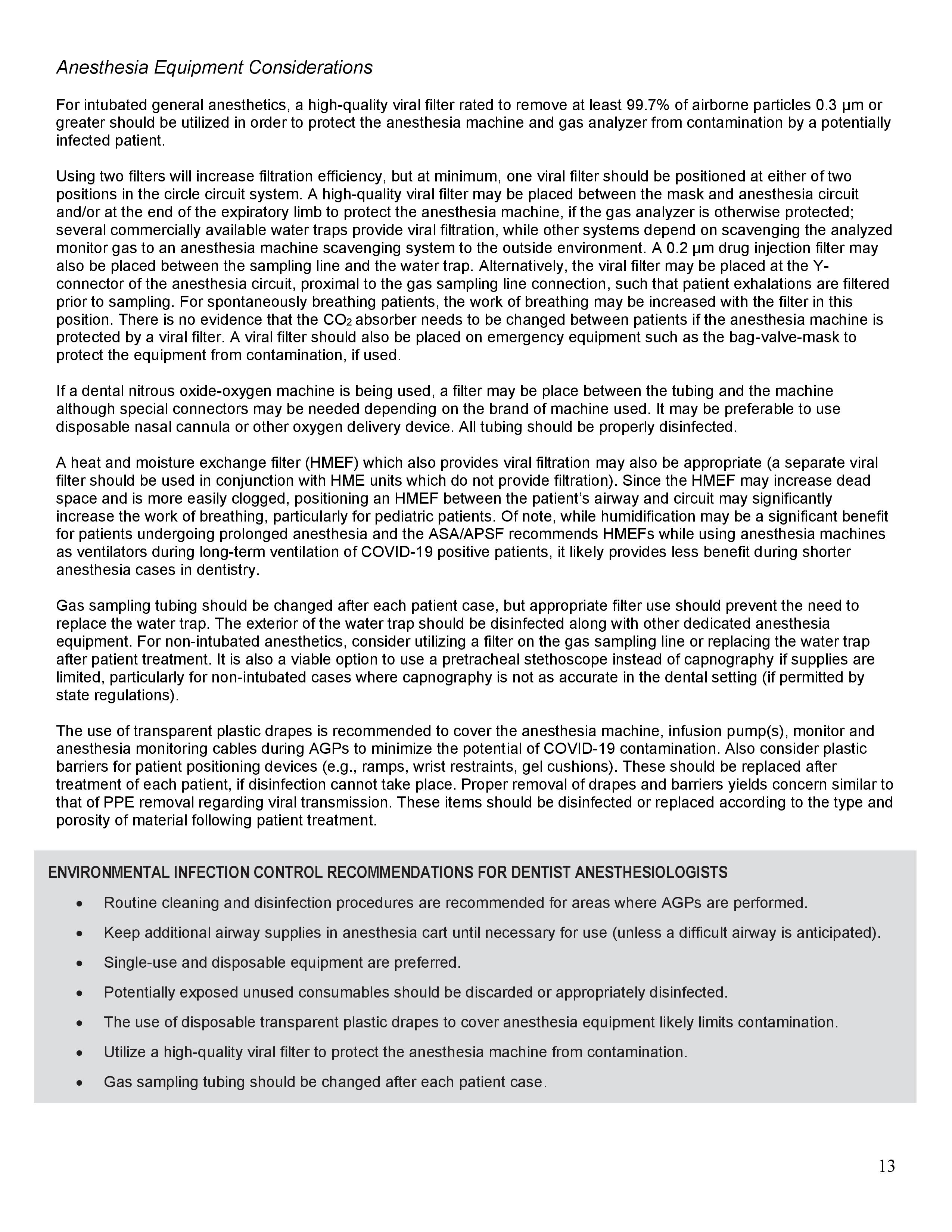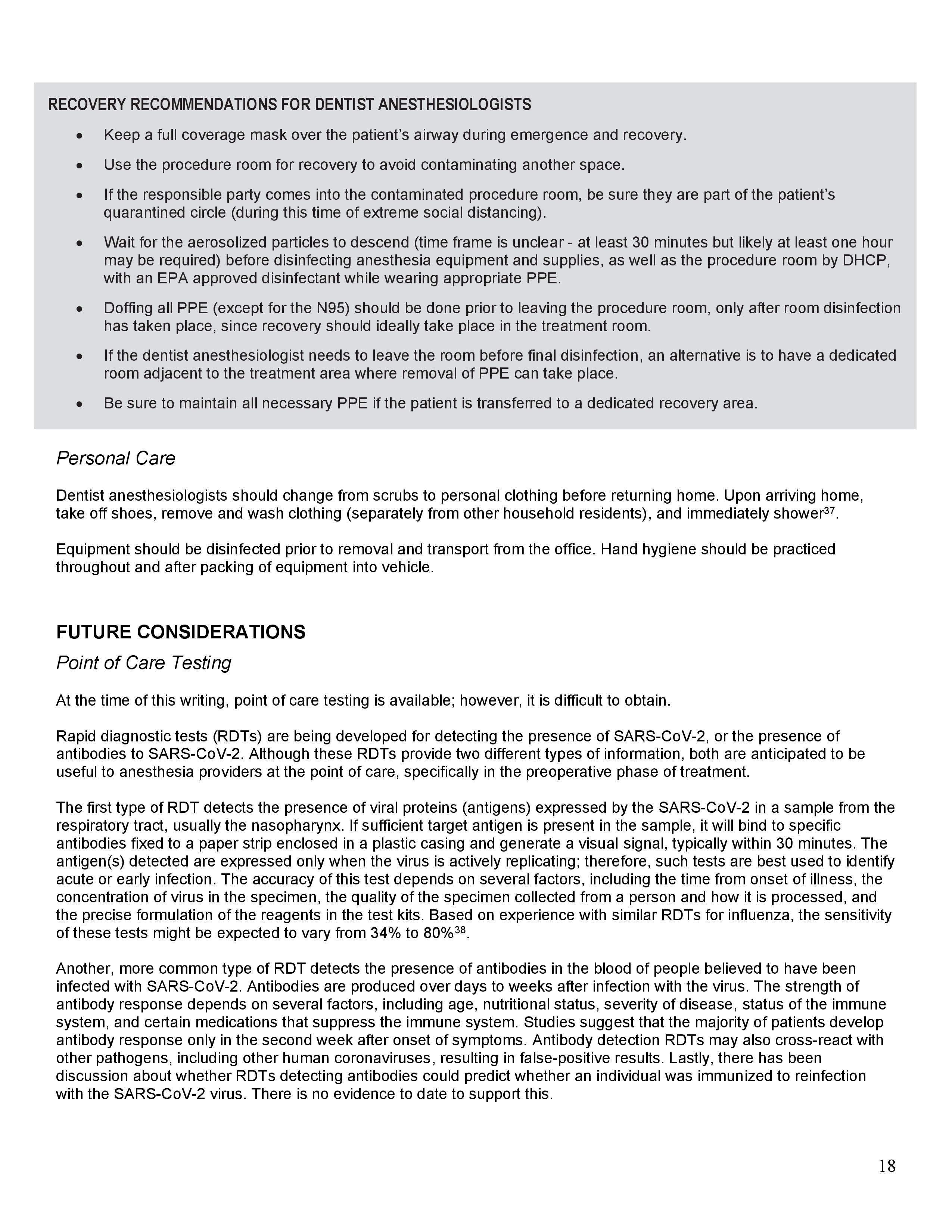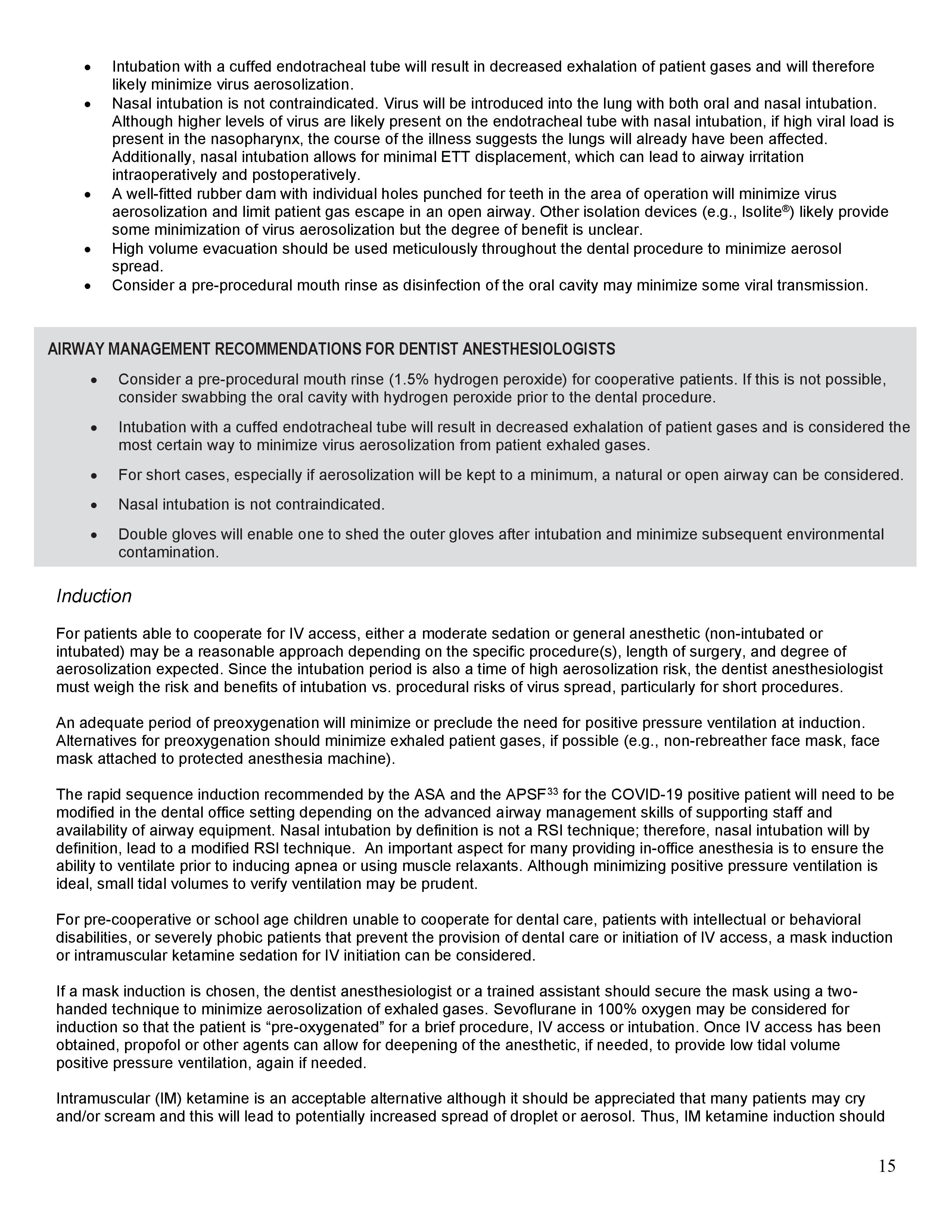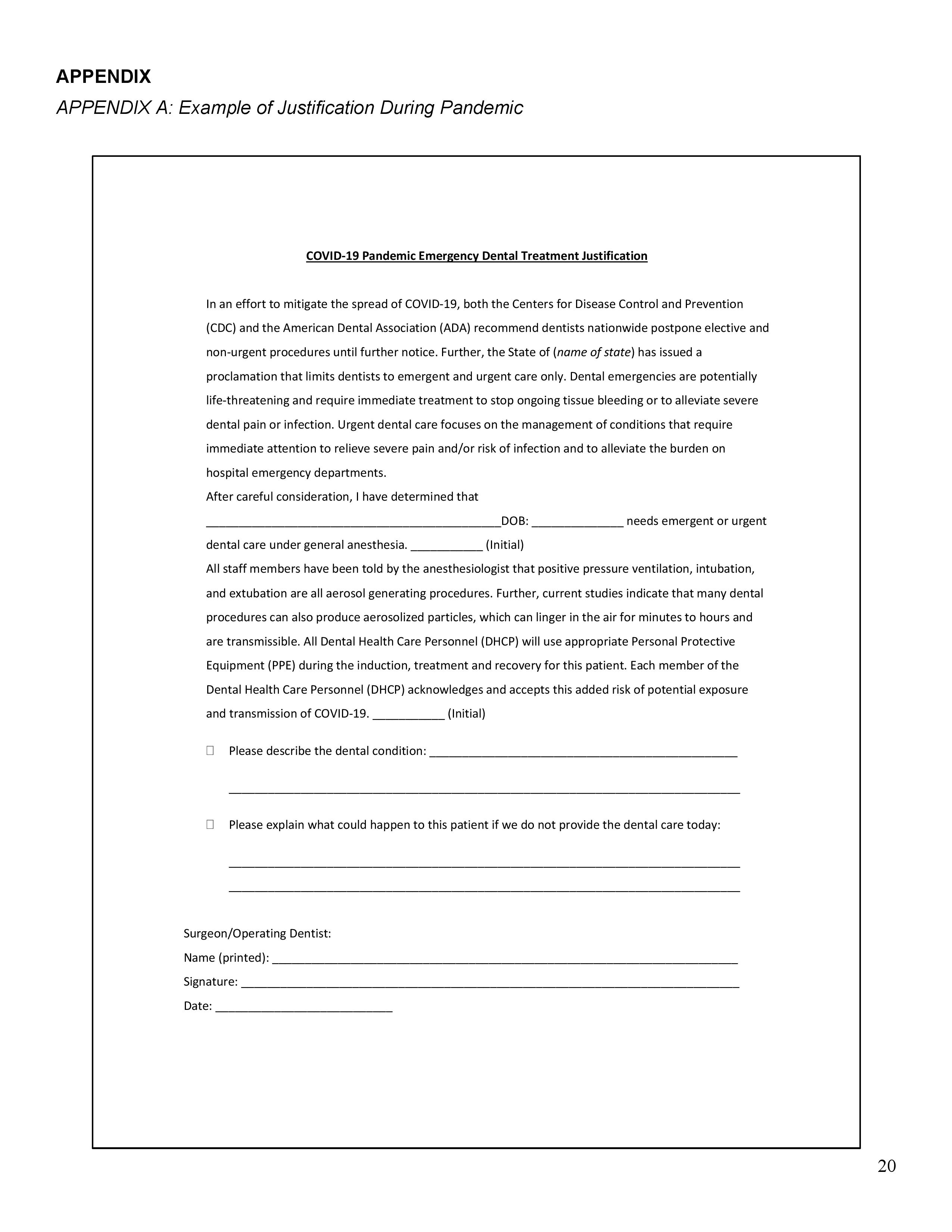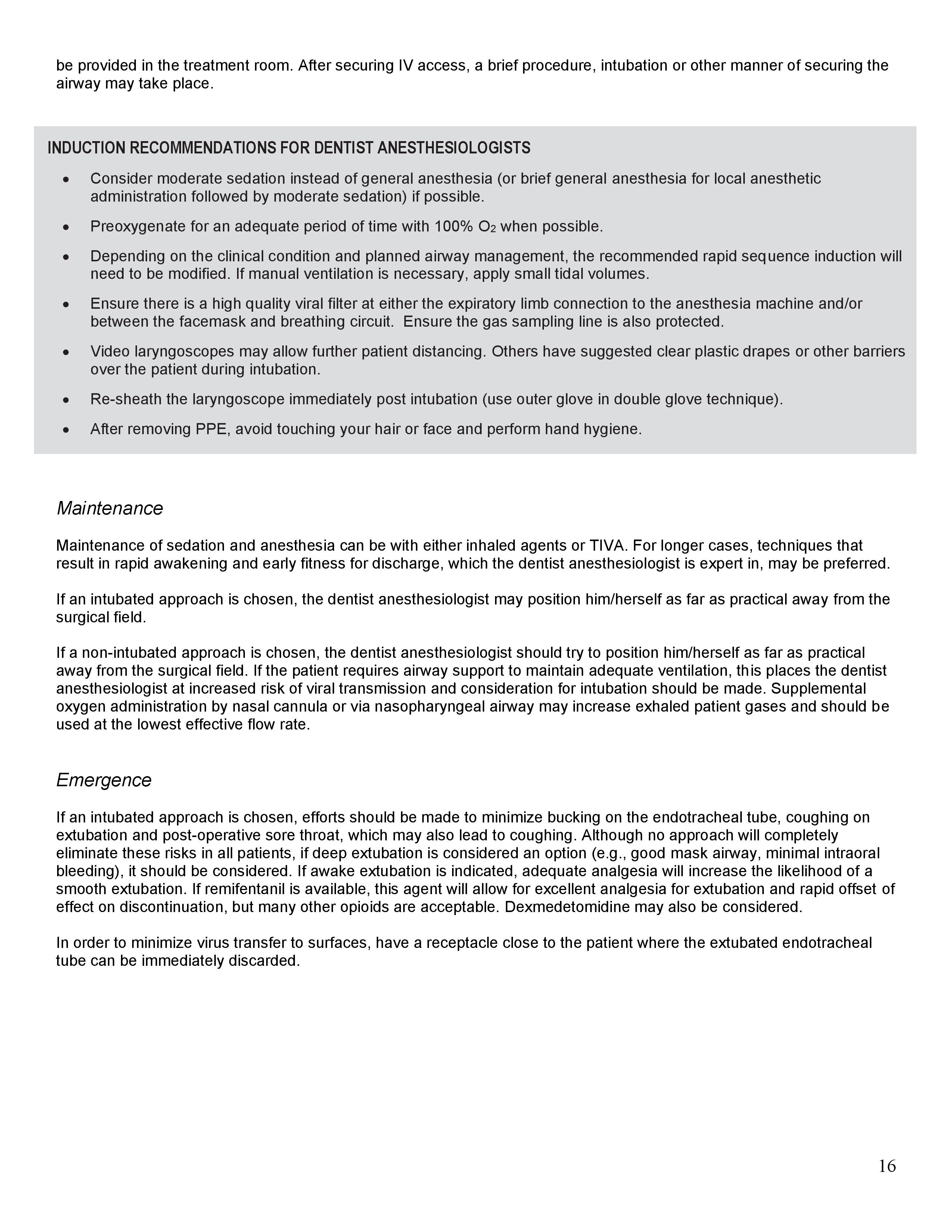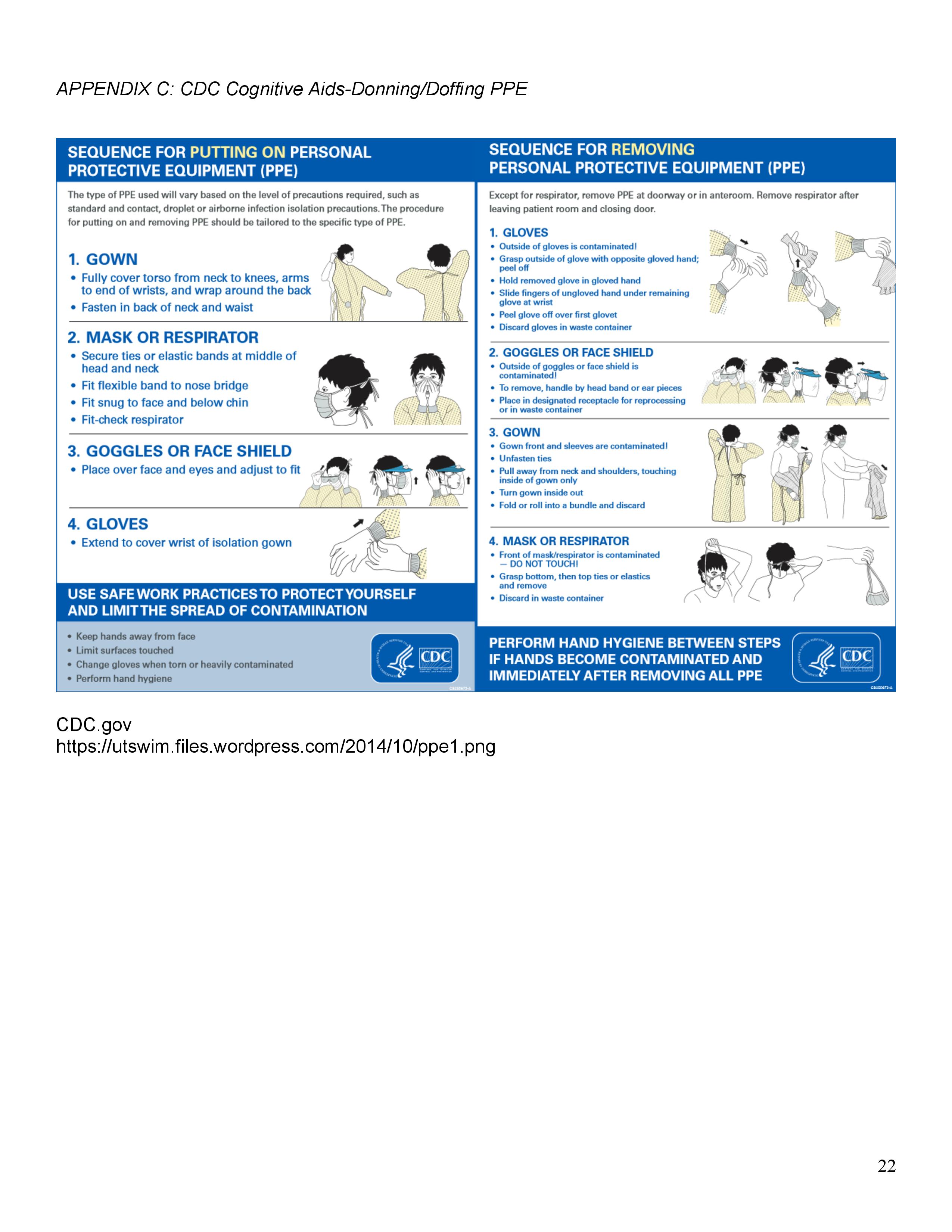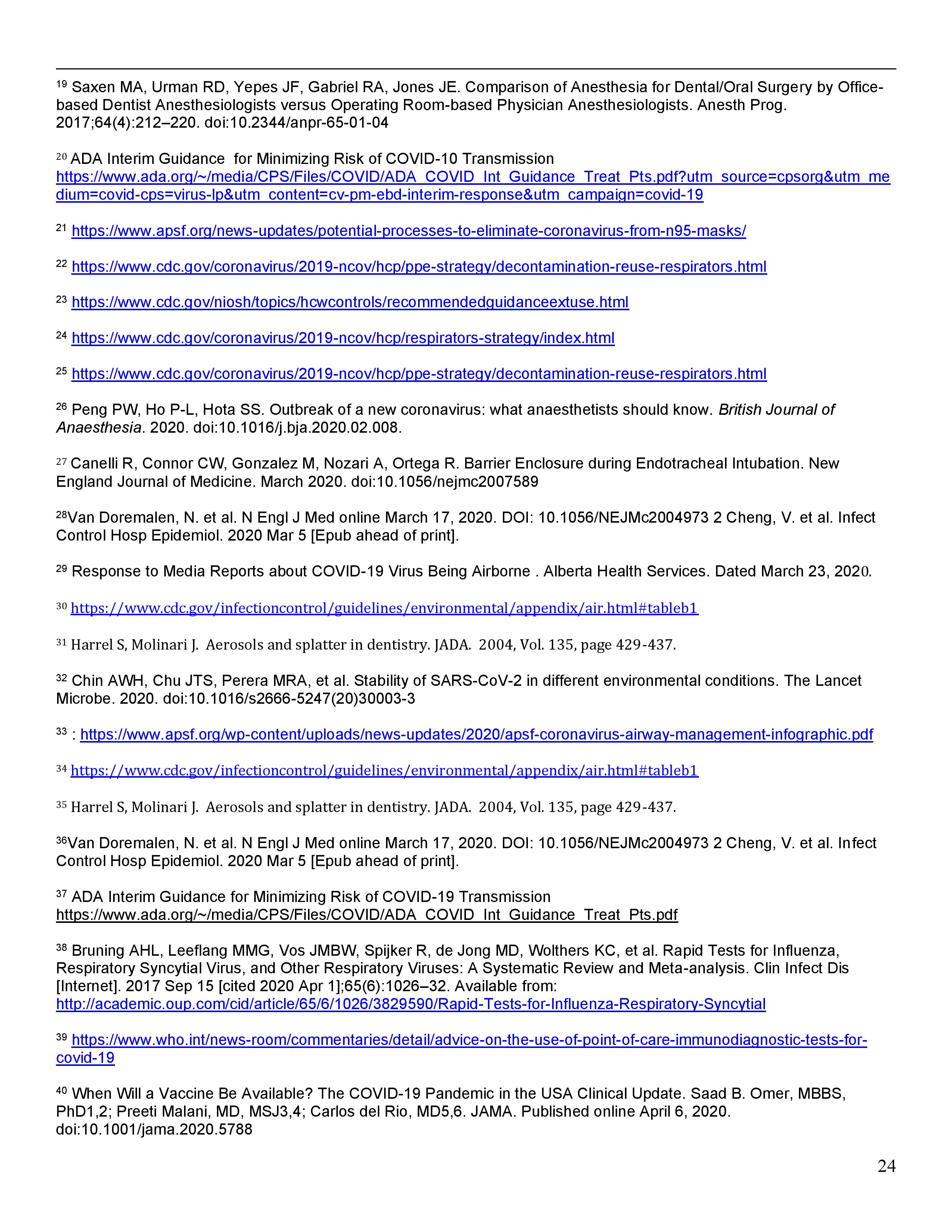Guideline by The American Society of Dentists Anesthesiologists https://www.asdahq.org/.
Interim Guidance For Dentist Anesthesiologists Practicing In The Office-Based Setting During The COVID-19 Pandemic
Last updated 4/14/20
Summary
The current pandemic of respiratory disease spreading from person-to-person is caused by a novel coronavirus (SARS-
CoV-2), which can develop into COVID-19 (coronavirus disease 2019). COVID-19 is the third novel coronavirus infection
in two decades that was originally described in Asia, after Severe Acute Respiratory Syndrome (SARS) and Middle East
Respiratory Syndrome (MERS). Coronaviruses are a large family of viruses that are common in humans and in many
different species of animals, including camels, cattle, cats, and bats. Rarely, animal coronaviruses can cross species and
infect people and then spread between people as occurred with SARS-CoV, MERS-CoV, and now with SARS-CoV-22.
Clinical Course
The complete clinical picture with regard to COVID-19 is not fully known. Reported illnesses have ranged from very mild
(including some with no reported symptoms) to severe, including death. The most common symptoms are fever, dry
cough, fatigue and dyspnea. Much less common symptoms are nasal congestion and diarrhea. The median time from
symptom onset to the development of pneumonia is approximately 5 days and the median time from symptom onset to
severe hypoxia and ICU admission is approximately 7-12 days.
The incubation period (the time from exposure to development of symptoms) of SARS-CoV-2 and other coronaviruses
(e.g., MERS-CoV, SARS-CoV) ranges from 2–14 days. The onset and duration of viral shedding and the period of
infectiousness for COVID-19, however, are not yet clear. This complicates the job of anesthesia providers as it must be
assumed that all patients are capable of transmission regardless of symptoms.
Older people (≥ 65 years old) and people of all ages with severe chronic medical conditions seem to be at higher risk of
developing serious COVID-19 illness. Recent case reports have described severe hypoxemia without dyspnea.
Routes of Transmission
Current evidence suggests that SARS-CoV-2 is primarily transmitted through droplets (particles diameter 5-10 μm).
Person-to-person transmission largely occurs when an individual with the infection emits droplets containing virus
particles while coughing, sneezing, and talking. These droplets land on the respiratory mucosa or conjunctiva of another
person, usually within a distance of 6 ft (1.8 m) but perhaps farther3. The droplets can also settle on stationary or movable
objects and can be transferred to another person when they come in contact with these fomites. Survival of the virus on
inanimate surfaces has been an important topic of discussion. While there is a dearth of evidence, what is available
suggests the virus can remain infectious on some inanimate surfaces at room temperature for up to 9 days. This time is
shorter at temperatures greater than 86° F (30° C). The good news is that cleaning and disinfection are effective in
decreasing contamination of surfaces, emphasizing the importance of proper infection control, particularly in dental
offices.
Airborne transmission is different from droplet transmission as it refers to the presence of microbes within droplet nuclei
less than 5 μm in diameter, which can remain in the air for long periods of time and be transmitted to others over greater
distances4 (>1m). In the context of COVID-19, airborne transmission may be possible in specific circumstances and
settings, including those in which aerosolization occurs. Previous studies with SARS-CoV identified tracheal intubation as
a significant risk factor for transmission of SARS to Health Care Workers (HCWs)5.
In a recent study of environmental sampling of rooms of patients with COVID-19, many commonly used items as well as
air samples had evidence of viral contamination6. In the context of the heterogeneity in evidence and possibility of
aerosolization of the virus during certain medical procedures, public health agencies, including the Centers for Disease
Control and Prevention (CDC) recommend airborne precautions in situations involving patients with COVID-19. This
evidence in addition to extrapolating data from SARS indicates that transmission through aerosols is likely, particularly
with procedures such as endotracheal intubation, positive pressure ventilation and dental procedures. Without proper
point-of-care testing available, it is prudent to practice airborne precautions with any aerosol-generating procedures
because asymptomatic patients are known to contribute to the transmission of the virus.
PREOPERATIVE CONSIDERATIONS
Dental Health Care Personnel (DHCP)
Dental health care personnel (DHCP) includes all clinical and administrative staff working in the dental office. All DHCP
should self-monitor by remaining alert to any respiratory symptoms (e.g., cough, shortness of breath, sore throat).
Additionally, they should check their temperature twice a day, regardless of the presence of other symptoms consistent
with a COVID-19 infection. If the temperature is ≥ 100° F, they should not be in the dental office. Dental offices should
create a plan for whom to contact if an employee develops fever or respiratory symptoms to determine whether medical
evaluation is necessary7.
Facility
Dentist anesthesiologists commonly provide care in multiple offices so it is important for them to contact their operating
dentists to help ensure the facilities they will be practicing in are following recommendations and mandates by appropriate
state and federal agencies regarding SARS-CoV-2. Further, fitness of the facility to provide sedation or general
anesthesia in a way that minimizes the risk of COVID-19 infection to the patient requiring treatment, subsequent patients
and the clinical team must be determined. This includes factors such as the size, isolation and ventilation of the operatory,
scavenging, the availability of all required personal protective equipment (PPE) and appropriate intubation
armamentarium. Ideally, the dental procedure and recovery will take place in one room with a closed door to prevent
aerosols from entering other sections of the office. When this is not possible, DHCP should wear, at a minimum, a surgical
mask at all times in areas of the office other than the operatory following an aerosol-generating procedure.
Screening patients prior to entering the facility is important for all DHCP. Waiting rooms should provide supplies for
respiratory hygiene and cough etiquette, including alcohol-based hand rub (ABHR) with 60-95% alcohol, tissues, and no-
touch receptacles for disposal8. It may be prudent to have patients wait in the car until the clinical staff is ready for the
dental procedure to minimize contact with staff or other patients.
Screening Patients and the Escort Prior to the Visit
To limit direct patient interaction and exposure, pre-operative evaluation should be conducted via telecommunication (phone or video conference) as much as possible. It is important to screen patients and the escort who will be caring for them after the procedure.
People with COVID-19 who have completed home isolation can receive emergency dental care9. This is defined as:
- At least 3 days (72 hours) have passed since recovery (resolution of fever without the use of fever-reducing medications and improvement in respiratory symptoms), and at least 7 days have passed since symptoms first occurred.
Or
- For individuals with laboratory-confirmed COVID-19 who have not had any symptoms, at least 7 days have passed since the date of the first positive COVID-19 diagnostic test and no subsequent illness has developed.
Screening Recommendations for Prospective Patients
- In the past 14 days, have you
- Tested positive or been diagnosed with COVID-19?
- Been under investigation for possible coronavirus infection?
- Experienced a loss of taste or smell or flu-like symptoms such as fever, cough, shortness of breath, body aches or diarrhea?
- Have you been in close contact with another person who has been diagnosed with or under investigation for COVID-19?
Patients who respond ‘yes’ to any of these questions should not come into the dental office and should be encouraged to contact their primary care physician (PCP) for treatment recommendations. They can also be referred to dental facilities with airborne precautions (e.g., dental schools or hospital dental services) for emergency dental care.
- On the day of the procedure, ask screening questions again and take the temperature of the patient and the escort o
- If 99-100° F, consider the source of the fever (e.g., dental infection) and decide clinical course
- If ≥ 100° F, assess any difficulty with breathing
- If none, send home and have the patient follow up with their PCP if things worsen
- If breathing difficulty is observed, consider calling 911 or referring the patient to the emergency room
For more information, download the guidelines below and visit https://www.cdc.gov/coronavirus/2019-ncov/index.html.


